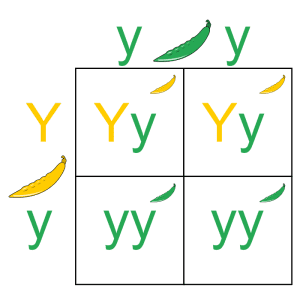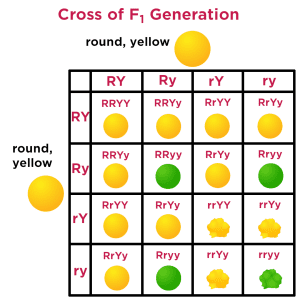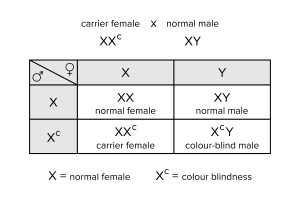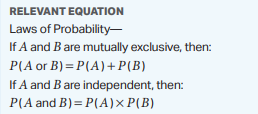Mendelian Genetics: Understanding How Traits Are Inherited
Gregor Mendel, the father of modern genetics, developed foundational laws that help us understand how traits are passed down from one generation to the next. Mendel’s experiments with pea plants led to important genetic principles like the Law of Independent Assortment and the Law of Segregation. This post will explore these principles, basic genetics vocabulary, inheritance patterns, and how they contribute to the diversity of life.
The Foundation: Gregor Mendel’s Laws
Law of Segregation: Mendel’s Law of Segregation states that each parent has two alleles for each trait, but these alleles are separated during the formation of gametes (egg and sperm cells). This means each gamete receives only one of the two alleles, ensuring genetic variation.
Law of Independent Assortment: This law tells us that alleles for different traits are distributed to gametes independently of one another. For example, getting your father’s allele for eye color does not mean you will also get his allele for hair color. This random combination contributes to genetic diversity.
DNA and Genetic Information
DNA and RNA are the carriers of genetic information. RNA is used to produce proteins, which are synthesized by ribosomes. This process occurs in all living organisms, demonstrating the universal role of DNA and RNA in sustaining life.
Key Genetic Vocabulary
Phenotype: The physical appearance of a trait (e.g., red, blue, spiky).
Genotype: The genetic makeup that determines a trait (e.g., AA, Aa, or aa).
Allele: A version of a gene. Genes usually come in dominant or recessive forms.
Homozygous Dominant: An organism with two dominant alleles (AA).
Homozygous Recessive: An organism with two recessive alleles (aa).
Heterozygous: An organism with one dominant and one recessive allele (Aa).
Dominant: A trait that will be expressed if at least one dominant allele is present.
Recessive: A trait that requires two copies of the recessive allele to be expressed.
Using Punnett Squares
Mendel’s rules allow us to predict the outcome of crosses between individuals using Punnett Squares. These grids illustrate the likelihood of offspring inheriting different combinations of alleles.
For example, when a heterozygous individual (Yy) is crossed with a homozygous recessive individual (yy), there is a 50% chance that the offspring will express the dominant phenotype and a 50% chance that they will express the recessive phenotype.

Patterns of Inheritance
Inheritance patterns go beyond simple dominance. Let’s explore a few important types:
Monohybrid Crosses
Monohybrid crosses involve the inheritance of a single trait. Punnett squares are used to determine the probabilities of offspring having particular traits. For example, crossing two heterozygous individuals (Aa x Aa) results in offspring with a 3:1 ratio of dominant to recessive phenotypes.
Dihybrid Crosses
Dihybrid crosses examine the inheritance of two different traits. The Punnett square for a dihybrid cross is larger and results in 16 possible combinations of alleles, typically resulting in a 9:3:3:1 ratio for phenotypes if both parents are heterozygous for both traits.

Sex-Linked Inheritance
Sex-linked traits are genes located on the X or Y chromosomes. Traits like color blindness and hemophilia are linked to the X chromosome. Because males have only one X chromosome, they are more likely to express sex-linked recessive traits. Females need two copies of the recessive allele to express the trait, while males only need one.
For example, a carrier female for color blindness (XX) crossed with a normal male (XY) could have a son with a 50% chance of being color-blind or a daughter with a 25% chance of being a carrier.

Non-Mendelian Genetics
While Mendel’s rules work for many traits, there are many non-Mendelian patterns of inheritance, including incomplete dominance, codominance, and polygenic traits. In incomplete dominance, neither allele is completely dominant, resulting in a blending of traits (e.g., red and white flowers producing pink offspring). In codominance, both alleles are expressed equally (e.g., AB blood type).
Real-Life Application: Genetic Probability
Using Mendelian genetics, we can predict the probability of inheriting traits. For example, a couple each carrying a gene for a recessive condition has a 25% chance of having a child affected by that condition. Understanding genetic inheritance is essential in fields like agriculture, medicine, and conservation.
Wrapping It Up
Mendelian genetics forms the foundation of our understanding of inheritance. Key concepts like the Law of Segregation and the Law of Independent Assortment explain how traits are passed from parents to offspring, while Punnett squares allow us to predict these outcomes. Additionally, the concept of sex-linked inheritance helps explain why some traits are more common in one sex compared to the other.
Genetic diversity is the key to evolution, and understanding how it is achieved through Mendelian inheritance helps us appreciate the complexity of life. Whether through monohybrid crosses, dihybrid crosses, or sex-linked traits, the study of genetics is an exploration into the very code that makes each of us unique.





 4.1 Attribution Theory and Person Perception: Why We Judge People the Way We Do (Even When We’re Totally Wrong) Let’s be honest. We’ve all
4.1 Attribution Theory and Person Perception: Why We Judge People the Way We Do (Even When We’re Totally Wrong) Let’s be honest. We’ve all


